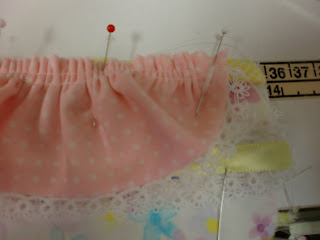I LOVE my Roll the Gold Titanium Rotary Cutting Blades...
and I sell LOTS of the Schmetz Titanium Embroidery Needles....SEW I was curious...
WHAT is Titanium?
Googling...I found: oh yeah - that it is on the periodic table of elements - #22. Briefly taking me back to the horror days of college chemistry! (It probably woulnd't have been so bad if I'd had a CALCULATOR instead of SLIDE RULE...but then let's not talk about how long ago college was for me...as I already gave it away!
Gorgeous, textural stuff if I do say so. See this:
I knew it must be strong - so here are some interesting facts:
1. It has a low density and is a strong, lustrous, corrosion-resistant (including sea water, aqua regia and chlorine) transition metal with a silver color.
2. Titanium was discovered in Cornwall, Great Britain, by William Gregor in 1791 and named by Martin Heinrich Klaproth for the Titans of Greek mythology.
The element occurs within a number of mineral deposits, principally rutile and ilmenite, which are widely distributed in the Earth's crust and lithosphere, and it is found in almost all living things, rocks, water bodies, and soils.
3. Its most common compound, titanium dioxide, is a popular photocatalyst and is used in the manufacture of white pigments.
4. Titanium can be alloyed with iron, aluminium, vanadium, molybdenum, among other elements, to produce strong lightweight alloys for aerospace (jet engines, missiles, and spacecraft), military, industrial process (chemicals and petro-chemicals, desalination plants, pulp, and paper), automotive, agri-food, medical prostheses, orthopedic implants, dental and endodontic instruments and files, dental implants, sporting goods, jewelry, mobile phones, and other applications.
5. The two most useful properties of the metal form are corrosion resistance and the highest strength-to-weight ratio of any metal. In its unalloyed condition, titanium is as strong as some steels, but 45% lighter.
As I blogged once before - this blade, along with the Dritz KAI blade, are the only ones I use in my sewing/design work. WHY? They just hold up longer!!!! Nothing aggravates me MORE than 'hanging chads' i call them of fibers of fabric I'm trying to cut. I want a crisp, clean cut - EVERY TIME, and that's what I get - the longest - with these Titanium Roll the Gold Blades.

and I sell LOTS of the Schmetz Titanium Embroidery Needles....SEW I was curious...
WHAT is Titanium?
Googling...I found: oh yeah - that it is on the periodic table of elements - #22. Briefly taking me back to the horror days of college chemistry! (It probably woulnd't have been so bad if I'd had a CALCULATOR instead of SLIDE RULE...but then let's not talk about how long ago college was for me...as I already gave it away!
Gorgeous, textural stuff if I do say so. See this:
I knew it must be strong - so here are some interesting facts:
1. It has a low density and is a strong, lustrous, corrosion-resistant (including sea water, aqua regia and chlorine) transition metal with a silver color.
2. Titanium was discovered in Cornwall, Great Britain, by William Gregor in 1791 and named by Martin Heinrich Klaproth for the Titans of Greek mythology.
The element occurs within a number of mineral deposits, principally rutile and ilmenite, which are widely distributed in the Earth's crust and lithosphere, and it is found in almost all living things, rocks, water bodies, and soils.
3. Its most common compound, titanium dioxide, is a popular photocatalyst and is used in the manufacture of white pigments.
4. Titanium can be alloyed with iron, aluminium, vanadium, molybdenum, among other elements, to produce strong lightweight alloys for aerospace (jet engines, missiles, and spacecraft), military, industrial process (chemicals and petro-chemicals, desalination plants, pulp, and paper), automotive, agri-food, medical prostheses, orthopedic implants, dental and endodontic instruments and files, dental implants, sporting goods, jewelry, mobile phones, and other applications.
5. The two most useful properties of the metal form are corrosion resistance and the highest strength-to-weight ratio of any metal. In its unalloyed condition, titanium is as strong as some steels, but 45% lighter.
As I blogged once before - this blade, along with the Dritz KAI blade, are the only ones I use in my sewing/design work. WHY? They just hold up longer!!!! Nothing aggravates me MORE than 'hanging chads' i call them of fibers of fabric I'm trying to cut. I want a crisp, clean cut - EVERY TIME, and that's what I get - the longest - with these Titanium Roll the Gold Blades.

SAVE $ on these blades since you read about them at my BLOG!
Click Below.






















































